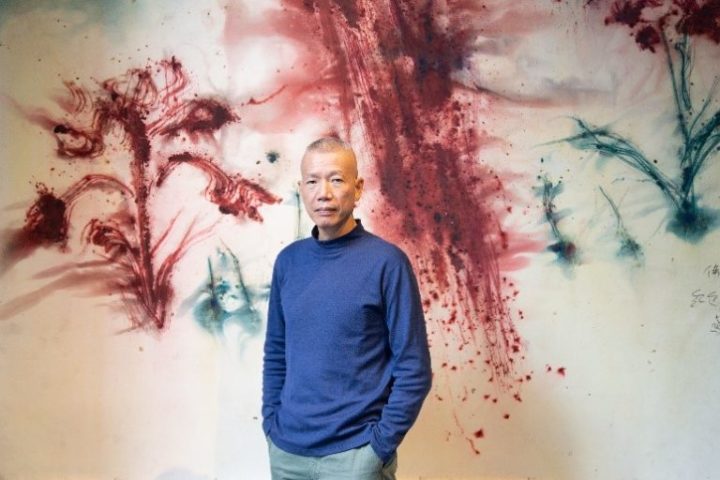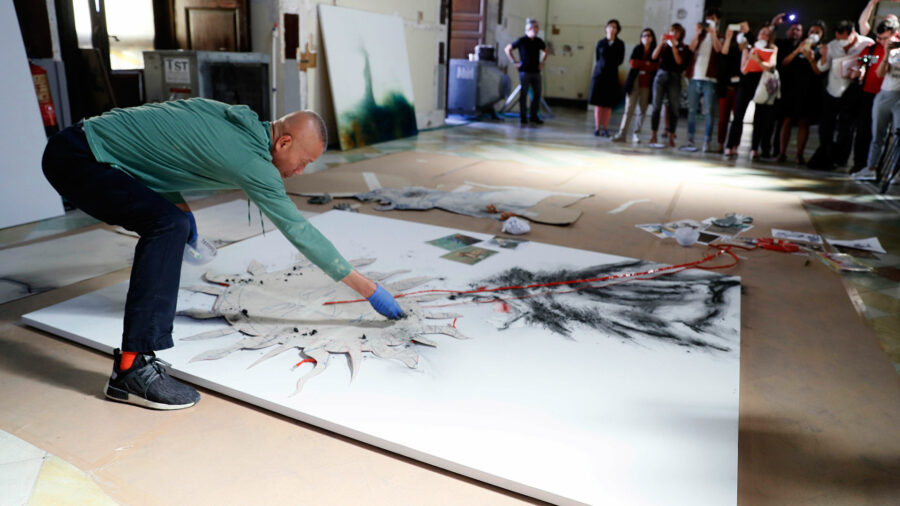
His name is Cai Gou-Quiang, born in China (Quanzhou, 1957). As a contemporary artist, he has experimented with various techniques and materials, among them gunpowder explosions on canvas.
As you can imagine, this curious painting technique has the serious drawback of being very unstable. That is to say that, in essence, it consists of granules of gunpowder and pigment that are deposited on the canvas by the effect of the explosion and although fixing resins are used as a varnish, the mineral particles tend to fall off easily due to their irregularity, size and weight.
It is the type of work of art that would be considered “ephemeral” because of its limited period of stability and integrity as a pictorial work.
And yet, in today’s art market, its works fetch very high prices (lot of 14 gunpowder paintings for 9.5 million USD in 2007).
At SIT, as a company specialising in the transport, handling, exhibition and conservation of works of art, we often come across works of this complexity and have to develop packaging systems, materials and systems suitable for moving and handling works of art with such extreme fragility.
In the case of a work by Cai Guo-Quiang, we not only had to develop a box that would guarantee total safety for the painting, avoiding vibrations that would cause bits of paint to fall off, but also an exhibition system that would allow the work to be admired without the risk of the slightest contact with the pigment and powder remaining on the hands.
The solution was a three-metre long microclimatic display frame with virtually invisible anti-reflective glass, humidity stabilisers and corrosive pollutants. The work has already been on display for several years in this display case and is in an optimal state of conservation.
